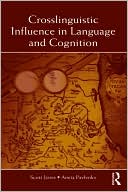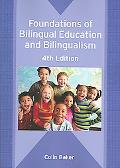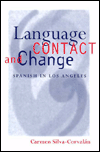Crosslinguistic Influence in Language and Cognition
Search in google:
A cogent, freshly written synthesis of new and classic work concerning crosslinguistic influence, or "transfer," this book will become the authoritative account of transfer in second-language learning and its consequences for language and thought. Transfer in both production and comprehension is treated extensively, and new ideas such as the distinction between semantic and conceptual transfer, lateral transfer, and reverse transfer are given the attention they deserve. The book will be of considerable interest to students and scholars in the fields of second language acquisition, bilingualism, and applied linguistics.
List of tables and figures ixPreface xiOverview 1Introduction 1Phases of Transfer Research 4Historical Skepticism about Transfer 8Landmark Findings from the Pre-1990s Transfer Research 10Recent Developments in CLI: New Areas of Research 13Recent Developments in CLI: New Theoretical Accounts 15Types of CLI 19Area of Language Knowledge/Use 21Directionality 21Cognitive Level 22Type of Knowledge 23Intentionality 24Mode 24Channel 24Form 25Manifestation 25Outcome 25Identifying Crosslinguistic Influence 27Introduction 27Defining the Scope 28Two Broad Approaches to Investigating CLI 28Psycholinguistic Approaches to CLI 30Intrasubjective Methods 32Intersubjective Methods 36Pseudolongitudinal Designs: The Nexus Between Longitudinal and Cross-Sectional 36Evidence for CLI 41Methodological Rigor 48Additional Methodological Considerations 52Mediating Variables 52Scope of Effects 58Promising Future Methods for Investigating Transfer 58Linguistic Transfer 61Introduction 61Phonological and Orthographic Transfer 62CLI in the Perception and Production of Segmental Phonology 63CLI Effects on Syllable Structure and Suprasegmental Phonology 67Orthographic Transfer 70Lexical and Semantic Transfer 72Morphophonological versus Semantic Transfer in Language Users' Lexical Errors 15CLI Effects in Lexical Representation, Lexical Accessibility, and Lexical Activation 82Word Choice Transfer 88Morphological and Syntactic Transfer 92Morphological Transfer 92Syntactic Transfer 96Discursive, Pragmatic, and Sociolinguistic Transfer 102Discursive Transfer 102Pragmatic Transfer 106Sociolinguistic Transfer 109Conclusions 111Conceptual Transfer 112Introduction 112Language and Concepts 113Language-mediated Concepts 113Conceptual Structure 116Semantic and Conceptual Levels of Representation 118Semantic and Conceptual Transfer 120Crosslinguistic Differences and CLI in Eight Conceptual Domains 122Objects 123Emotions 125Personhood 129Gender 132Number 136Time 139Space 142Motion 145Conclusions 148Conceptual Change 153Introduction 153Conceptual Change in Second Language Acquisition 154Internalization of New Concepts 156Restructuring 160Convergence 164Shift 166Conceptual Attrition 169Conclusions 171Transferability and Factors that Interact with Transfer 174Introduction 174Linguistic and Psycholinguistic Factors 176Crosslinguistic Similarity 176Area of Language Acquisition and Use 183Frequency, Recency, and Salience 183Markedness and Prototypicality 186Linguistic Context 189Cognitive, Attentional, and Developmental Factors 190Level of Cognitive Maturity 190Developmental and Universal Processes of Language Acquisition 192Cognitive Language Learning Abilities 193Attention to and Awareness of Language 194Factors Related to Cumulative Language Experience and Knowledge 197Age 197Length, Frequency, and Intensity of Language Exposure 199Length of Residence 200General Level of Proficiency 201Number and Order of Acquired Languages 204Factors Related to the Learning Environment 206Factors Related to Language Use 207Conclusions 210Conclusions 211Introduction 211Recent CLI Research: Key Findings and Arguments 212Implications for Applied Linguistics 216Implications for Modeling of Bi- and Multilingual Representation, Processing, and Acquisition 219Language Competence 219Language Storage and Access 220Interaction Between Languages 222Semantic and Conceptual Levels of Representation 224CLI in the Multilingual Lexicon 227Implications for Future Research 229Methodology 229Research Areas 232References 236Index 275








